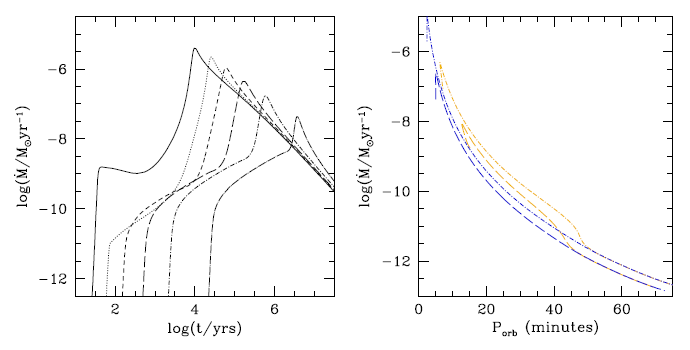
Figure 24: Left panel: the  evolution of AM CVn systems with
evolution of AM CVn systems with  and
and
 . Systems with donors having the degeneracy parameter
. Systems with donors having the degeneracy parameter  = 3.5, 3.0,
2.5, 2.0, 1.5 and 1.1 are shown by the solid, dotted, short-dashed, dashed, shortdash-dotted and
dash-dotted lines, respectively. Right panel: the dependence of the
= 3.5, 3.0,
2.5, 2.0, 1.5 and 1.1 are shown by the solid, dotted, short-dashed, dashed, shortdash-dotted and
dash-dotted lines, respectively. Right panel: the dependence of the  relation on the initial
binary parameters for pairs
relation on the initial
binary parameters for pairs  ,
,  (yellow dashed line),
(yellow dashed line),
 ,
,
 (yellow dot-dashed line),
(yellow dot-dashed line),  ,
,  (blue
dashed line),
(blue
dashed line),  ,
,  (blue dot-dashed line). Image
reproduced with permission from Figures 6 and 10 of [142], copyright by the authors.
(blue dot-dashed line). Image
reproduced with permission from Figures 6 and 10 of [142], copyright by the authors.
 evolution of AM CVn systems with
evolution of AM CVn systems with  and
and
 . Systems with donors having the degeneracy parameter
. Systems with donors having the degeneracy parameter  = 3.5, 3.0,
2.5, 2.0, 1.5 and 1.1 are shown by the solid, dotted, short-dashed, dashed, shortdash-dotted and
dash-dotted lines, respectively. Right panel: the dependence of the
= 3.5, 3.0,
2.5, 2.0, 1.5 and 1.1 are shown by the solid, dotted, short-dashed, dashed, shortdash-dotted and
dash-dotted lines, respectively. Right panel: the dependence of the  relation on the initial
binary parameters for pairs
relation on the initial
binary parameters for pairs  ,
,  (yellow dashed line),
(yellow dashed line),
 ,
,
 (yellow dot-dashed line),
(yellow dot-dashed line),  ,
,  (blue
dashed line),
(blue
dashed line),  ,
,  (blue dot-dashed line). Image
reproduced with permission from Figures 6 and 10 of [142], copyright by the authors.
(blue dot-dashed line). Image
reproduced with permission from Figures 6 and 10 of [142], copyright by the authors.
